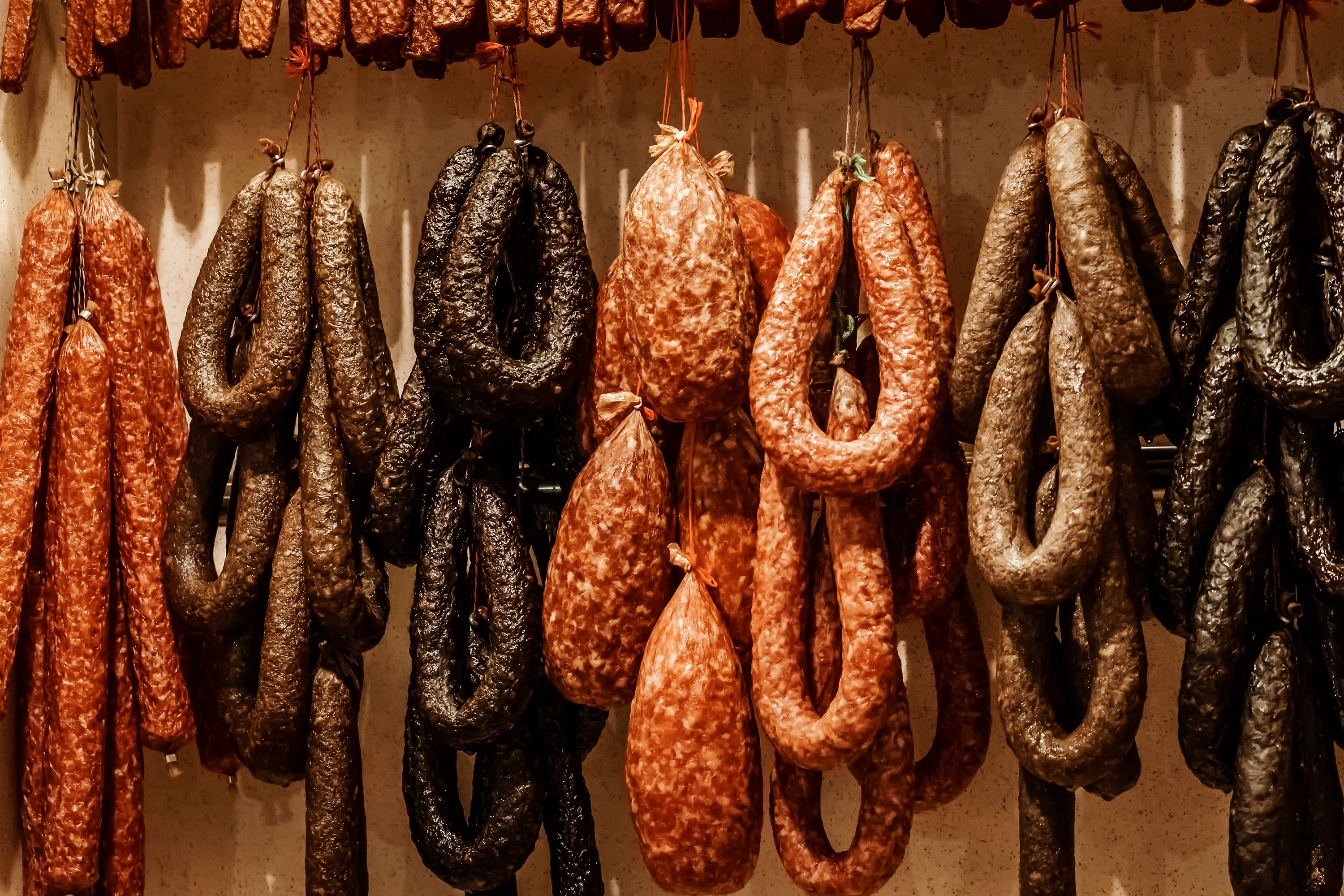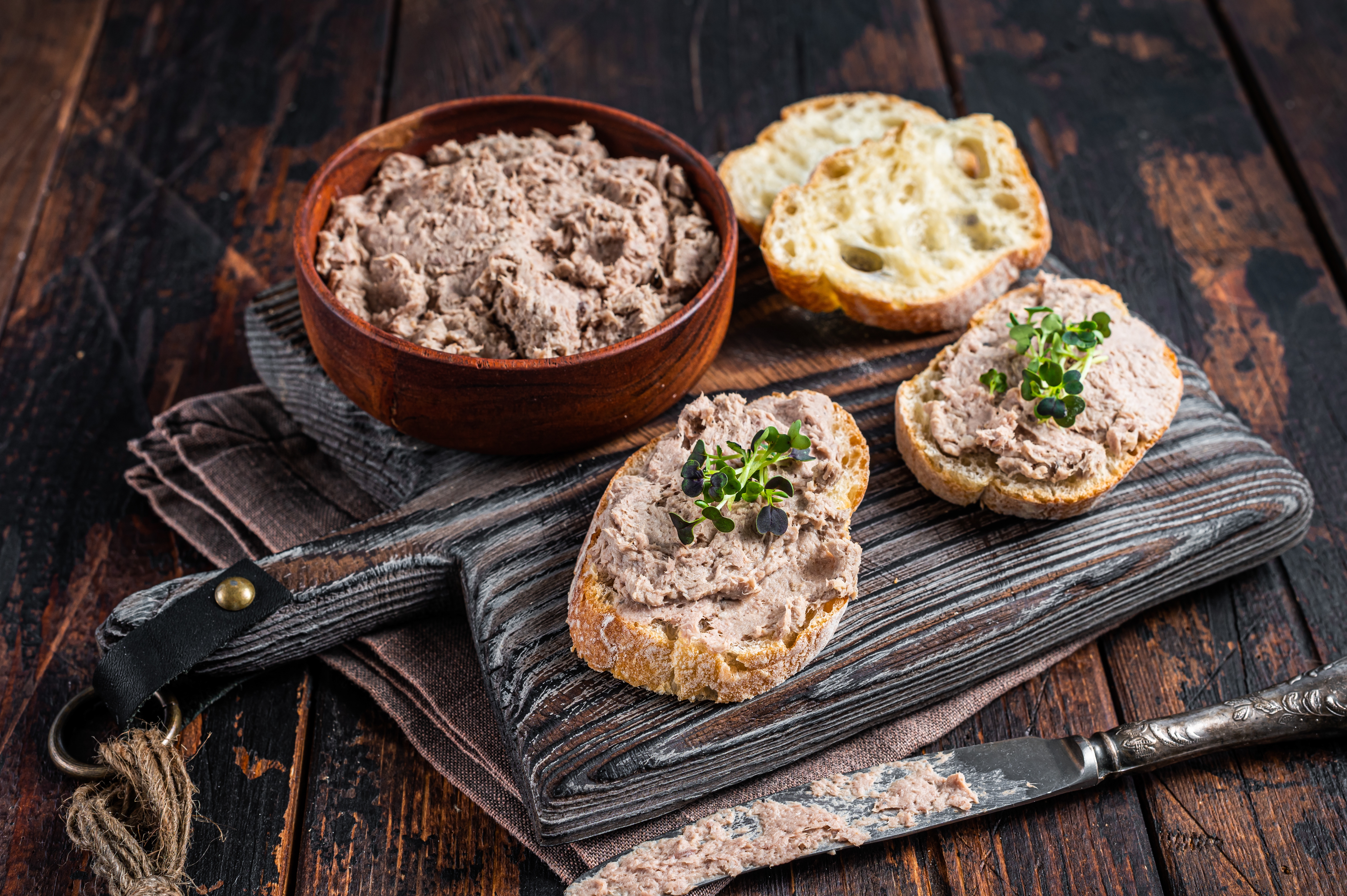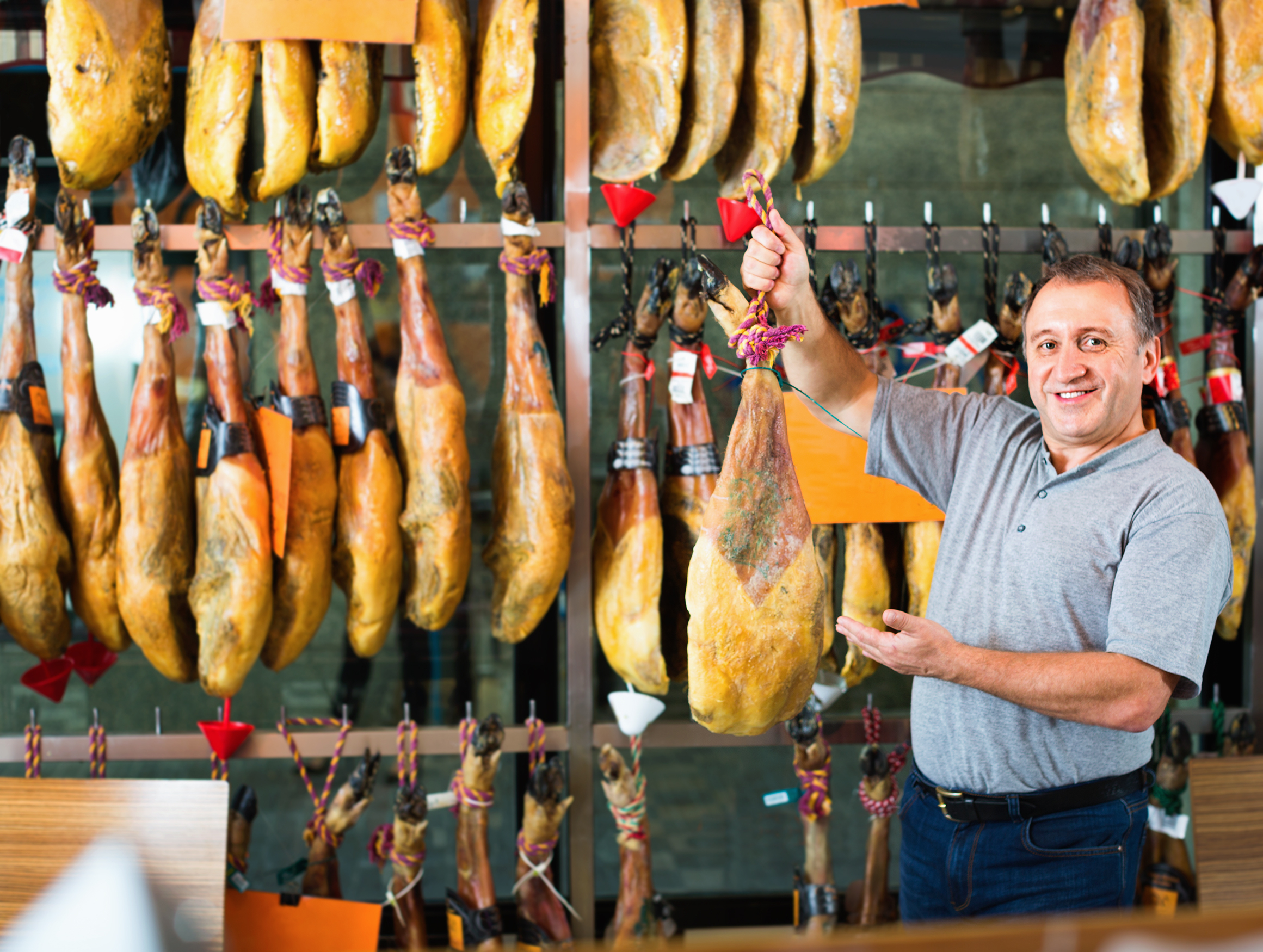Free digital copy
Get Speciality Food magazine delivered to your inbox FREE
Get your free copy
When it comes to solving the age-old question, ‘what’s for dinner?’, the deli counter can, with certainty, come to the rescue.
In fact, from hunky chunks of artisan cheese, to freshly prepared salad pots and golden sausage rolls, there’s no occasion the deli can’t cater to. Picnics in a hurry, say. Or sides for the barbecue.
Where the deli really comes into its own is in the warmer months, when everyone’s bursting to get outside for a spot of al fresco eating. And it’s the grazing platter or charcuterie board that continues to capture the imagination of food lovers across the world.
A spread of charcuterie can be as easy or ostentatious as you’d like it to be. A few slices of silky Parma ham draped lazily over ripe juicy slivers of melon is simplicity itself. Or you could (as many are) go to town, creating a dizzyingly complex display of salami roses, and fruit rainbows to wow guests.
There is a clincher though. If you want to make an impression, those cured meats – the centrepieces, if you will – need to be of the best quality. And this is where speciality retail comes in.
The art of salting and curing is centuries old, but continually innovating as consumer tastes change.
If you’re thinking about what to stock this year, British charcuterie should absolutely be in the mix, says Paul Patterson, founder of The Charcuterie Box Co. Varieties made in the UK are no longer the novelty they were in the past, and there’s real merit to having a few in your counter, especially brands local to you, which tourists will be keen to try and take home. Then there’s the welfare aspect – with Britain renowned for the standards with which is treats its livestock.
Supporting British makers is essential, Paul says, because the industry is “incredible”. “It’s a growing band of producers, using older, bigger, longer life animals and insisting on rare breed, free range and sustainable meat.”
The best UK producers, Paul continues, “are sourcing incredible quality of meat, and good charcuterie is all about the quality of the meat”.
He advises asking brands about provenance before making a decision. “Any decent supplier will be more than happy to tell you where they source their animals. Also, check the amount of additives. They should be as minimal as possible.”
While it’s easy to get carried away with the exciting new wave British charcuterie offerings of coppa, lomo and the like, don’t forget your staples. British ham (smoked and unsmoked) is a must.
An important, and underestimated part, of the British charcuterie boom is snacking salamis, which are really starting to make their presence felt now, fitting in perfectly with growing consumer preference for high-protein, meaty treats.
James Smart, founder of The Real Cure, produces Venison Beer Sticks and Beef Snacking Salami, alongside his range of British charcuterie – all made with sustainable, ethically sourced meat. All the pork he uses is raised outside, venison is wild, and beef is grass fed. This is an important part of the business model for both him and his customers. “People can be confident, when they order from us, that we’re doing things the right way,” he says, adding that snacking salami is taking off big time.
“We tested the water a number of years ago with our Wild Venison Beer Sticks smoked over oak. They were incredibly popular, so we decided to do a 100% beef version, and we’ve just bought in a new black truffle pork snacking salami. They’re all ambient, and we’re finding they’re some of the most popular things we make now.”
There’s a big consumer base for these products, James adds, saying they appeal both to those who want to enjoy protein snacks post-gym, and to people looking for something a bit different to go alongside a glass of beer or wine. “They sell really well and re-order rates are really high. When you think that they’re only £5 for a pack of five, that’s an easy sell to the consumer.”
Could 2025 be the year of terrines and rillettes? Dylan Fourie, deli manager at Macknade certainly thinks so. Considered a bit of an underdog in most counters, these French style offerings seem to be experiencing a renaissance, particularly amongst younger shoppers keen to widen their palates and experiment further on their charcuterie boards with more than just cold cuts.
“Customers are trying these things on holiday and coming in to buy them from us,” Dylan says, adding that they have a small key line of products here – including pork rillettes, duck rillettes and a couple of pâtés, selling an incredible 4-6kg of rillettes every couple of days.
“Our chicken liver pâté is from the UK and it does exceptionally well,” he adds. “The key thing with pâtés is to get people to taste them with the things they go best with – don’t just give them a bit on a spoon. Show them options!
“Put pâtés or rillettes with a bit of crusty bread, or a cornichon to show how to eat the product. We have a guy who comes in for goose rillettes and cooks pasta with it. That tasting element is what really sells these things.”
Sticking to a few staples in this category will stand you in good stead, Dylan says. Then start upping the ante towards Christmas when customers are keen to add something new to their baskets for entertaining. “We like to push the boundaries on the deli and to explore new things, but traditional recipes and styles have their place because they work.”

When the business owners have Italian roots, stocking the best Italian charcuterie is almost an unwritten rule, Dylan continues, talking about the ‘bread and butter’ of Macknade’s deli counter. Although, he adds, every deli counter should include a flavour of Italy, because it’s what customers know and expect.
A deli isn’t a deli without the Parma ham, the Prosciutto or salamis. “The Italians have a very authentic and simple way of curing meat. You know what you’re getting, and its preservative free to a great extent,” Dylan says. “That’s why we like it so much.”
As across the charcuterie industry, quality varies greatly, so he recommends finding a very good supplier who understands what you’re looking for. “We use Credenza. They’re an exceptional stockist and find us really good producers. They know quality is key for is.”
Something to remember, he adds, is that going direct to small batch or small artisan Italian brands doesn’t always translate to charcuterie excellence. “While you can find producers on tiny homesteads, they’re not always going to be good. There’s a fine line between small makers and mass produced. When you find someone you like, stick with them.”
How can you tell what you’re buying is the good stuff? There are a few tells. Parma ham, Dylan says, must be San Daniele, and his preference is 18 to 24-months. “We find that’s an exceptional product with a good balance of flavours. It’s not overly salty or sweet and displays beautifully as well.”
San Daniele is deeper, darker and richer, Dylan adds. “If you get a 9-month ham, it won’t have that flavour yet. Stick to something older. The more you get into that maturity, the more it develops.”
The quintessential, must-have Italian salamis, he says, are Napoli and Milano – ideally in natural casings. You could have 40 salamis in the counter, Dylan adds, but these two are the ones customers are naturally drawn to. If you have too many different types open in the counter, it can be a lot of work looking after them.
“Another great one is finocchiona with fennel. It looks beautiful on the counter and time and time again people come back to try ‘the fennel one’ - it’s not an easy one to say. Then you’ve got Milano (which is quite simple), Napoli (with hints of pepper) and a fennel salami – three great all-rounders.

We’ve already established that pâtés and rillettes (largely from France) are key lines for delis in their charcuterie offerings, but what else does the French larder bring to the table? The answer, says FICT (French Charcuterie and Deli Companies) export manager, Claire Geroudet, is plenty.
“Preserving, fermenting and curing are such buzz words,” says Claire. “We know from our research that lots of people are enjoying charcuterie boards and sharing boards over a glass of wine.”
FICT’s raison d’etre is to put the best of the best French charcuterie front and centre of those moments. “A lot of skill and very very traditional processes, going back so many years, in family-run companies, goes into French charcuterie. And may products have PGI and PDO labelling – we know that’s important for traders and customers. It shows the quality and art that’s gone into the products.”
French delicacies Claire thinks British speciality shops should be stocking include dry-cured ham and salamis, sausages (including andouille, andouillette, boudin blanc and boudin noir), rillettes and pates.
Saucissons are a key anchor point in any deli stocking French charcuterie, Claire says. “It’s the product people know and feel comfortable with. Buying an excellent saucisson will give them confidence to try other things.”
Consumers here are ready though, she adds, for something new to the market. “To tell these products, retailers need to lean into the traditions behind them. Tradition is what customers value and alongside labels such as PGI or Label Rouge, is an important factor in their purchasing decisions.”
Now is the time, Claire says, to talk to your wholesalers, and for wholesalers to impart their knowledge of French charcuterie to retailers when they’re having those conversations ... conversations and knowledge that will feed right through the chain, to the deli counter, and into dinner parties, as friends and family ask hosts, ‘what is that, and where can I get my hands on it?’.

Just as Spanish cheese is often shoehorned to mean Manchego, few consumers know more about Spanish charcuterie than the Serrano ham or chorizo they find in their local supermarket. And they’re missing a trick, says Jesus, founder of specialist Spanish deli, Los OrigenES.
Just as Italy and France, Spain has a long history of curing, and many of the products are made in a similar way. Serrano ham, for example, could comfortably be called a ‘cousin’ of Prosciutto.
The king of Spanish charcuterie, though, has to be Jamon Iberico – a very special product indeed. The process to make Iberico ham has been tried in the UK, but it’s not just the acorns or the grazing land or the climate that make it so revered around the world – it’s the place itself. Even the Southwestern Coastal breeze plays a part in its beauty.
The ham passes through a number of chambers, says Jesus, each for a different length of time and at a different humidity, until it reaches its final destination – a drying room with open windows, where it will rest for 3.5-4.5 years, kissed by the warm Spanish air.
It really is a labour of love. One that begins with the pigs themselves. “They grow free-range, not in farms,” says Jesus. “So they have access to acres and acres of land. You don’t see fences. And another important thing, that not even some people in Spain know properly, is the breed of pig. The best Iberico ham (Iberico de Bellota) is 100% acorn fed. That means the mother and father are Iberian breed with full traceability. If, it’s 50%, the mother is Iberian breed, and the father is Duroc and acorn fed.”
“There are four protected regions in Spain for Jamon Iberico. Two are on the West side of Cadiz (Pedroches and Jabulgo) and they are the most known out of Spain. You pay, I would say, more for the marketing and branding of these than others. The others are Extremadura and (Salamanca) Guijuelo.”
“In Salamanca they don’t get as hot temperatures in the summer like the other protected areas. This reflects in the flavour of the product. This shows it’s not just the process or the acorns, but the climate and air that makes a difference.”
Jesus’ favourite is from the Extremadura region. “For me, it strikes the right balance between the Noeth and the South, and I know I am paying for the product, not the marketing!”
Beyond Jamon Iberico, Jesus says retailers should pay more attention when buying chorizo. “Most chorizo in the UK is a cheap chorizo,” he explains, saying the real deal should also be made using meat from the Iberian pig.
‘Real’ chorizo has a different flavour entirely. “It’s never hot,” he continues. “If you have chorizo that is hot, it is not Iberico.” What you should find, in the genuine article, is a mixture of finely cut fat and meat, which is cured for a short amount of time with paprika and perhaps a few other spices. It should not, Jesus adds, taste overly salty. “Salt masks a good product. It should be about enjoying the special taste of the meat and the paprika.”
If you want to stretch your Spanish selection further, go for a salchichon, which is nuttier, with a touch of warmth from black pepper, paprika-speckled lomo (from the loin of the Iberian pig), or Mallorcan speciality, sobrassada, made exclusively using meat and fat from the Black Pig which is infused with spices and transformed into a kind of spreadable sausage, not dissimilar to Italian nduja.
The most important thing when selling any charcuterie Jesus says, is reminding customers to bring it out of the fridge 45 minutes to an hour before serving to allow all its flavours to come alive. Your tasting samples on the counter should get the same treatment.
Dylan Fourie, deli manager at Macknade shares his advice for displaying and serving charcuterie
1. Think volume, volume, volume. You want the counter to look abundant without being too messy. If you can get in three legs of ham at a time, do it. A full counter looks phenomenal.
2. Keep the front end of each product neat and tidy throughout the day. Take each ha out and slice from the front if you start to see a dull colour.
3. Hang your salamis if you can. They call come with a string and you simply need to use banana hooks to display them. Visually it’s very impactful.
4. Display your ham fat side down – when its trimmed sometimes it doesn’t look so nice. And stagger them in the counter, using wooden supports to raise them up to create nice tiers.
5. Use sheet layering to separate sliced meats. At the moment we’re trialling paper to see how it works and it’s going well.
6. Slicing in advance, we find, doesn’t work at all. Slicing to order means the meat is kept in its best condition up to the last minute.
7. Remove the outer casing when slicing salami – nobody wants that stuck in their teeth!
8. Don’t throw away the bones. When we get close to the knuckle or when we have uneven pieces, we cut them up into small portions and put them on the counter at 50% off. People use them to make stocks and stews. We do the same for the ends of salamis. It ensures everything gets used.